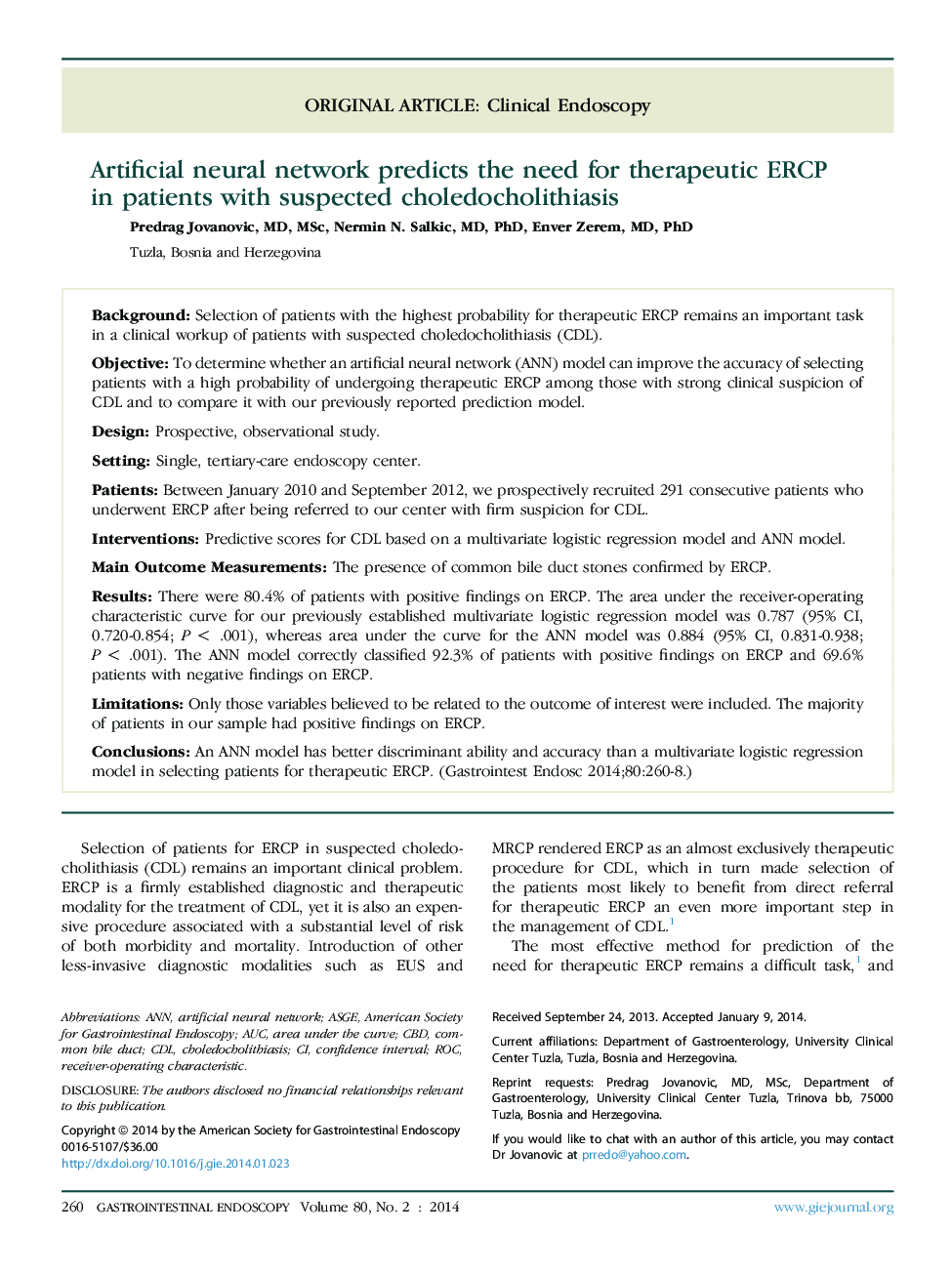| Article ID | Journal | Published Year | Pages | File Type |
|---|---|---|---|---|
| 3302966 | Gastrointestinal Endoscopy | 2014 | 9 Pages |
BackgroundSelection of patients with the highest probability for therapeutic ERCP remains an important task in a clinical workup of patients with suspected choledocholithiasis (CDL).ObjectiveTo determine whether an artificial neural network (ANN) model can improve the accuracy of selecting patients with a high probability of undergoing therapeutic ERCP among those with strong clinical suspicion of CDL and to compare it with our previously reported prediction model.DesignProspective, observational study.SettingSingle, tertiary-care endoscopy center.PatientsBetween January 2010 and September 2012, we prospectively recruited 291 consecutive patients who underwent ERCP after being referred to our center with firm suspicion for CDL.InterventionsPredictive scores for CDL based on a multivariate logistic regression model and ANN model.Main Outcome MeasurementsThe presence of common bile duct stones confirmed by ERCP.ResultsThere were 80.4% of patients with positive findings on ERCP. The area under the receiver-operating characteristic curve for our previously established multivariate logistic regression model was 0.787 (95% CI, 0.720-0.854; P < .001), whereas area under the curve for the ANN model was 0.884 (95% CI, 0.831-0.938; P < .001). The ANN model correctly classified 92.3% of patients with positive findings on ERCP and 69.6% patients with negative findings on ERCP.LimitationsOnly those variables believed to be related to the outcome of interest were included. The majority of patients in our sample had positive findings on ERCP.ConclusionsAn ANN model has better discriminant ability and accuracy than a multivariate logistic regression model in selecting patients for therapeutic ERCP.
